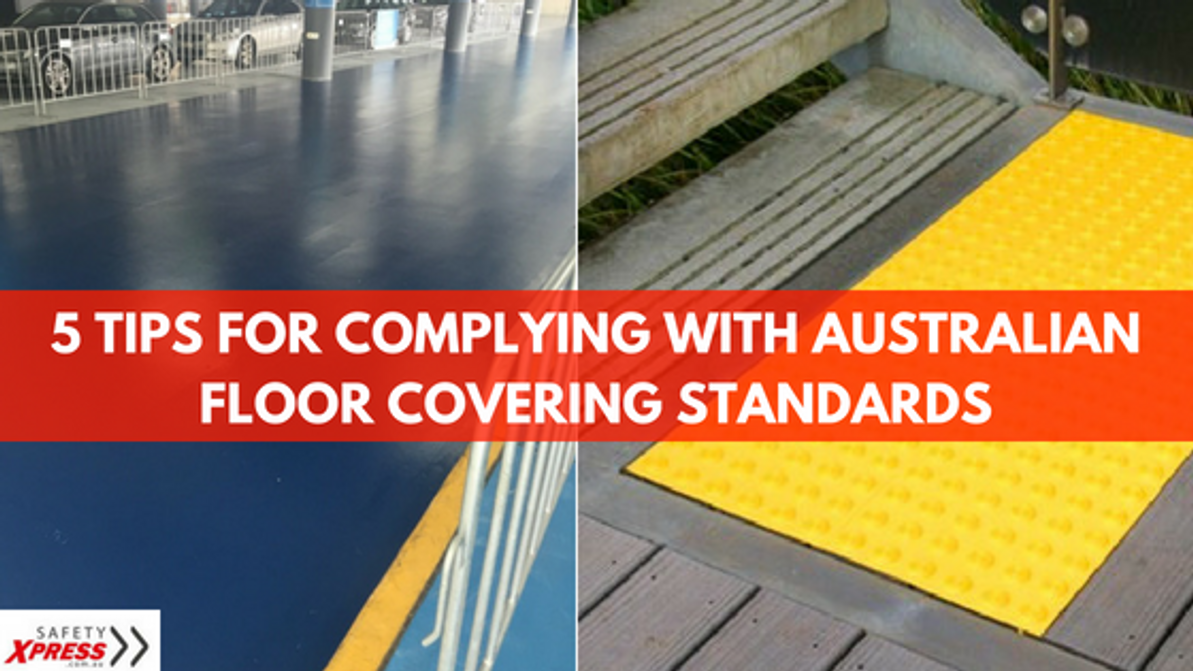5 Tips for Complying With Australian Floor Covering Standards

When complying with Australian floor covering standards is regarding a commercial building, there are many guidelines a builder or owner needs to consider.
These guidelines are used as protective measures to ensure the safety and security of the public at large. Hence, there are set standards for various aspects – be it energy efficiency or safety norms.
One important aspect of any building is its flooring.
Commercial spaces tend to experience heavy foot traffic so it becomes imperative for the builder to make sure that the flooring does not pose any OH&S (Occupational Health and Safety) risks.
- Floorings that are highly polished or are slippery in nature tend to cause slips, trips and falls, especially in wet or moist conditions.
- Similarly, reflective surfaces can create confusion for those with visual impairments.
- Poorly maintained floor surfaces can cause movement issues and even injuries.
To avoid all these situations, The Building Code of Australia along with Australian and New Zealand Standards and the Disability Discrimination Act has set floor covering standards that every commercial building must comply with.
If you are a builder, owner or manager of a commercial building – you must know these compliances.
Ignoring these guidelines can risk the physical well-being of people who use your premises and can drag you into legal and financial liabilities.
Tips to Ensure You Stay Compliant with Floor Covering Standards
To help you understand this better, we have compiled 5 best tips to stay compliant with Australian floor coverings. You can evaluate your existing floor type with these standards.
- Follow the Slip Resistant Standards
One of the biggest risks with floor coverings is slipping and falling due to wet weather conditions or fresh floor polishing. If you want the testing criteria for the slip-resistant surfaces, AS4586 and HB197 can provide you with the required knowledge based on the type of flooring material.
The Australian Building Codes Board has all the information relevant to the slip-resistant standards, so it is recommended to go through them thoroughly while choosing the type of floor covering for your next job.
- Consider Reflective Surfaces
When a shiny floor is exposed to light, it can cause glare that may even obstruct vision and cause trips or falls. Sometimes, this can cause severe injuries, especially for people with visual impairments. Moreover, if your floor covering exhibits a reflective surface, there are high chances it doesn’t meet the slip-resistant standards.
Though no specific standards have been stated in terms of reflective surfaces, it is important for you to understand how serious things can turn out. So, while deciding the finish of floor covering, make sure that the light sources do not produce any glare on the floor.
- Set Up Floor Coverings Accurately
Just like the material, even installation needs should be accurate. Constant wear and tear of improperly installed floor coverings is a major reason for the increased risk of slips and falls. Further floor damage demands a premature replacement and adds extra cost.
There are different standards for different floor coverings. The installation requirements for the ones that are durable, for instance, PVC, rubber and vinyl must be in accordance with AS1884. Adhering to the standard means you are carrying out the pre-installation inspection, subfloor inspection procedures as well as testing for the moisture content.
On the other hand, in the case of carpet and textile installation, you need to comply with AS2455 that includes complete information regarding different installation techniques. In short, abiding by them will ensure that you have installed the floor covering accurately.
- To Use Coloured and Glowing Features
If the floor has bright colours, contrast with the flooring, it can help the people distinguish high-risk areas which can possibly reduce the risk of slips and falls. You can consider using brightly coloured safety tapes and floor coatings that are able to draw attention to any possible risks while helping to navigate for visually impaired people. As a part of our services we use and apply an epoxy coating which can have a non-slip rating and can be coloured to designate different areas, particularly in areas such as car parks. This epoxy can be used in commercial spaces as well as in residential areas such as on garage floors.
- To Make Use of Safety Equipment like Tactile Indicators and Stair Nosing
One of the great floor covering solutions for OH&S is the correct application of stair tread nosing. As they are available with Safety Yellow inserts applying the nosing on the stairs and in the low-light areas helps to navigate the people easily.
Similarly, tactile indicators also warn of hazards approaching. Sometimes you tend to miss the stairs or even the edges of train platforms but these indicators alert you beforehand. Using tactile indicators, though, must be done consciously as you need to meet the size, layout and contrast standards in line with AS1428.4.
Also remember that any of the safety equipment or features used must be compliant with the slip resistance rating, luminance testing, fire testing and accessibility standards.
Staying Compliant Helps You Achieve Enhanced Security
It is simple; the standards are set in order to ensure safety. So, staying compliantwill definitely work in your interest. Following the floor covering standards will help you to minimise the risk of injury and will offer a safe and accessible design.
If you are looking to enhance safety for your workplace – you can reach out to us. We at Safety Xpress offer a huge range of Australian standards compliant safety products and services. Be it tactile indicators, stair nosings, bollards, linemarking, installations or anything else – you will find it on our website.
We are known as renowned suppliers of safety equipment in Australia. You can directly place an order from our website and even request for the same day delivery in case of an emergency. Simply place your order before noon, we will work with you to get your order dispatched fast!
Recent Posts
-
Which Speed Hump For Which Location?
At Safety Xpress, we have 3 types of Australian compliant speed humps. All of which suit different …16th Jul 2021 -
4 Useful Applications of Handrail Systems
Handrails are a key feature of many buildings. Also known as safety railing, handrails preve …15th Jan 2019 -
Strong & Durable Handrails That Don’t Need Any Welding
Staircases, walkways, pool decks, balconies - railings are found everywhere. Imagine a proper …8th Jan 2019




